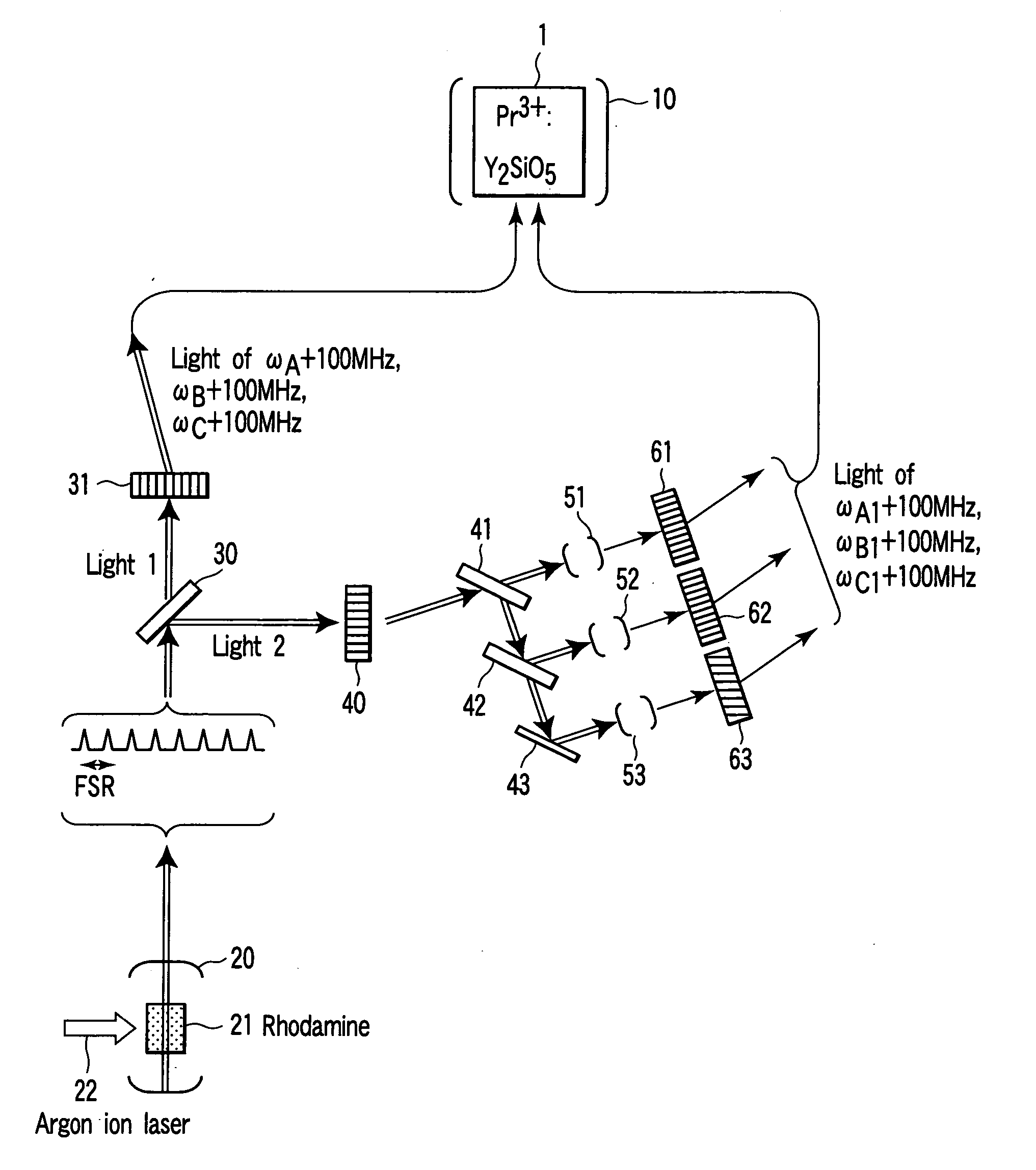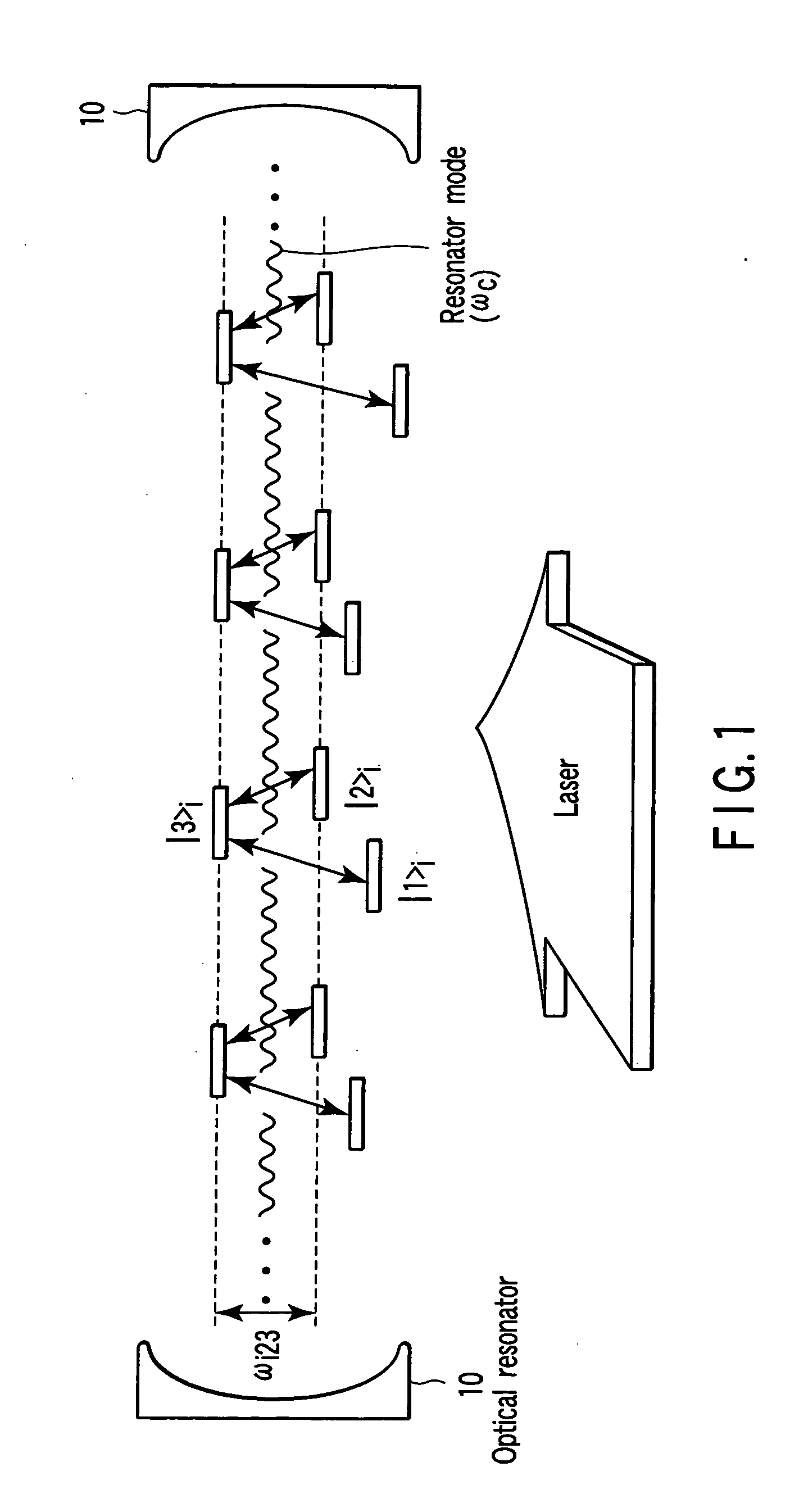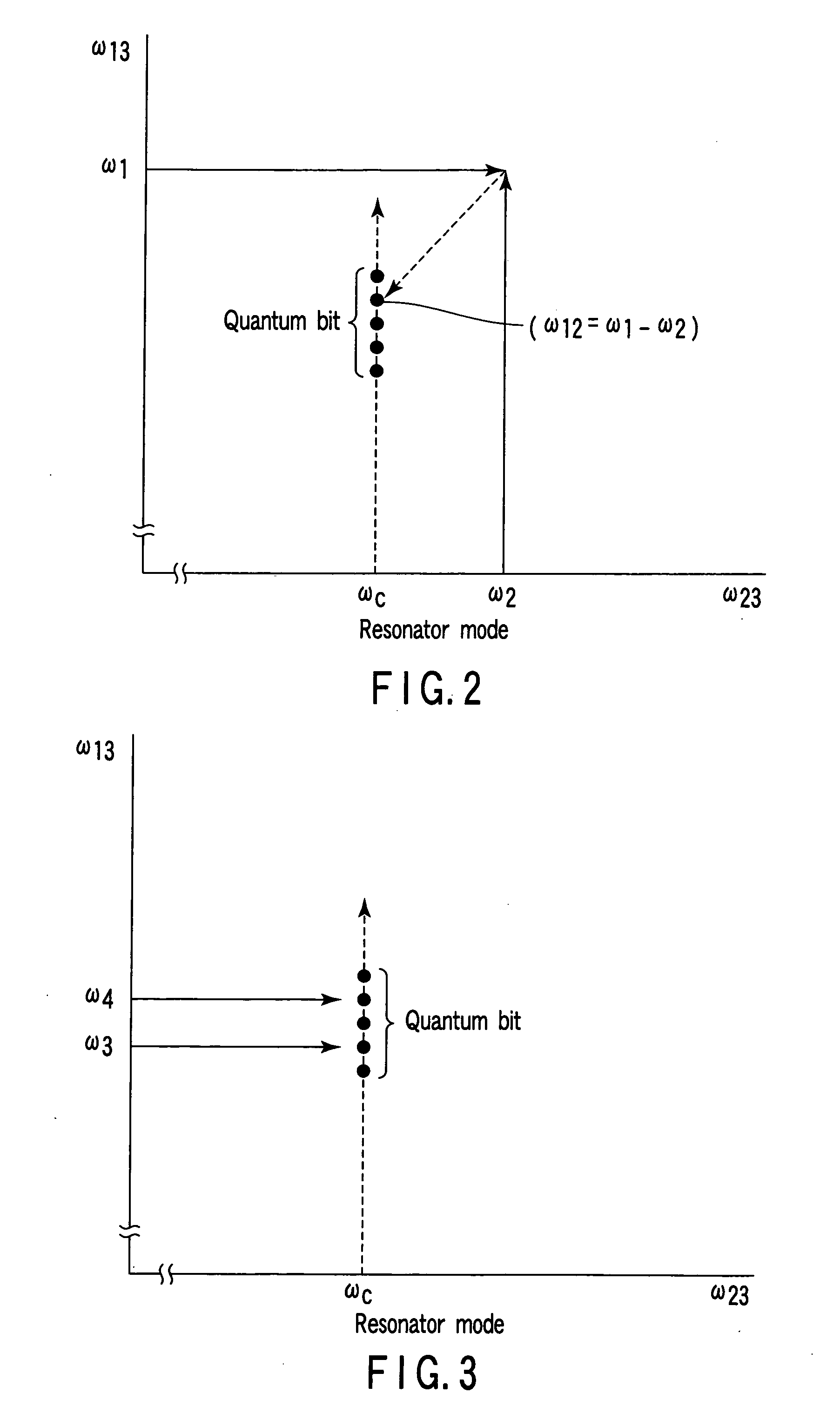Quantum computer apparatus
a technology of quantum computers and apparatuses, applied in the field of quantum computers, can solve the problems of little extensibility in the number of quantum bits, and no practical methods for overcoming these disadvantages are known so far
- Summary
- Abstract
- Description
- Claims
- Application Information
AI Technical Summary
Benefits of technology
Problems solved by technology
Method used
Image
Examples
embodiment 1
[0041] Referring to FIG. 7, a quantum computer according to a first embodiment will be described. In this embodiment, Pr3+ ions contained in Pr3+:Y2SiO5 crystal, in which 0.01% Y+3 ions are replaced with Pr3+ ions, are utilized as physical system groups (quantum bit groups) forming a plurality of quantum computer elements that simultaneously operate. FIG. 7 shows the positions on the transition frequency plane of Pr3+ ions used as quantum bits in the quantum computer of the embodiment.
[0042] Opposite two surfaces of the Pr3+:Y2SiO5 crystal are polished, thereby forming a dielectric multi-layer mirror having a reflectance of 99.99% or more near 606 nm. Thus, an optical resonator with a free spectral range (FSR) of about 7.8 GHz is formed. This crystal is placed in a cryostat with an optical window, and is kept at the liquid helium temperature. This optical resonator has three resonator modes near 16501.12 cm−1, 16501.35 cm−1 and 16501.58 cm−1. Assume that these resonator modes are m...
embodiment 2
[0047] Referring to FIG. 8, a quantum computer according to a second embodiment will be described. In the second embodiment, a dye (rhodamine) 21 is made to flow in an optical resonator 20 having the same FSR as the optical resonator 10 (see the first embodiment) formed using opposite two surfaces of Pr3+:Y2SiO5 crystal 1, and is excited by an argon ion laser 22 to perform multi-mode oscillation. This is used instead of the three ring dye lasers employed in the first embodiment. The other structures are similar to those of the first embodiment, and quantum bit operations are performed in the same manner as in the first embodiment.
[0048] Resulting from the multi-mode oscillation, a laser that oscillates in units of 9.8 GHz is acquired. The beam emitted from this laser is split into two components by a splitter 30. One of the split components, which will be referred to as “light 1”, is passed through an acoustooptical effect element 31, where it is subjected to frequency shifting. As...
embodiment 3
[0049] In a third embodiment, the Pr3+:Y2SiO5 crystal employed in the first embodiment is kept at 1.4 K. The resonator formed of this crystal is made to have an FSR of 100 kHz.
[0050] In the same manner as in the first embodiment, photon ejection is arranged to be detectable regardless of whether it is performed in one or another of the three resonator modes (assumed to be resonator mode D (with an angular frequency ωD), resonator mode E and resonator mode F) separate from each other by FSR that causes interaction of quantum bits when detecting ions usable as the quantum bits. In this state, sweeping of a narrowed laser beam is performed within a range of approx. 200 kHz around an angular frequency higher than ωD by 2×17.3 MHz, thereby detecting a light beam of a particular angular frequency that causes three photons to be ejected in the respective three modes. Thus, three physical systems are detected, which have respective angular frequencies corresponding to transitions that are ...
PUM
 Login to View More
Login to View More Abstract
Description
Claims
Application Information
 Login to View More
Login to View More - R&D
- Intellectual Property
- Life Sciences
- Materials
- Tech Scout
- Unparalleled Data Quality
- Higher Quality Content
- 60% Fewer Hallucinations
Browse by: Latest US Patents, China's latest patents, Technical Efficacy Thesaurus, Application Domain, Technology Topic, Popular Technical Reports.
© 2025 PatSnap. All rights reserved.Legal|Privacy policy|Modern Slavery Act Transparency Statement|Sitemap|About US| Contact US: help@patsnap.com



